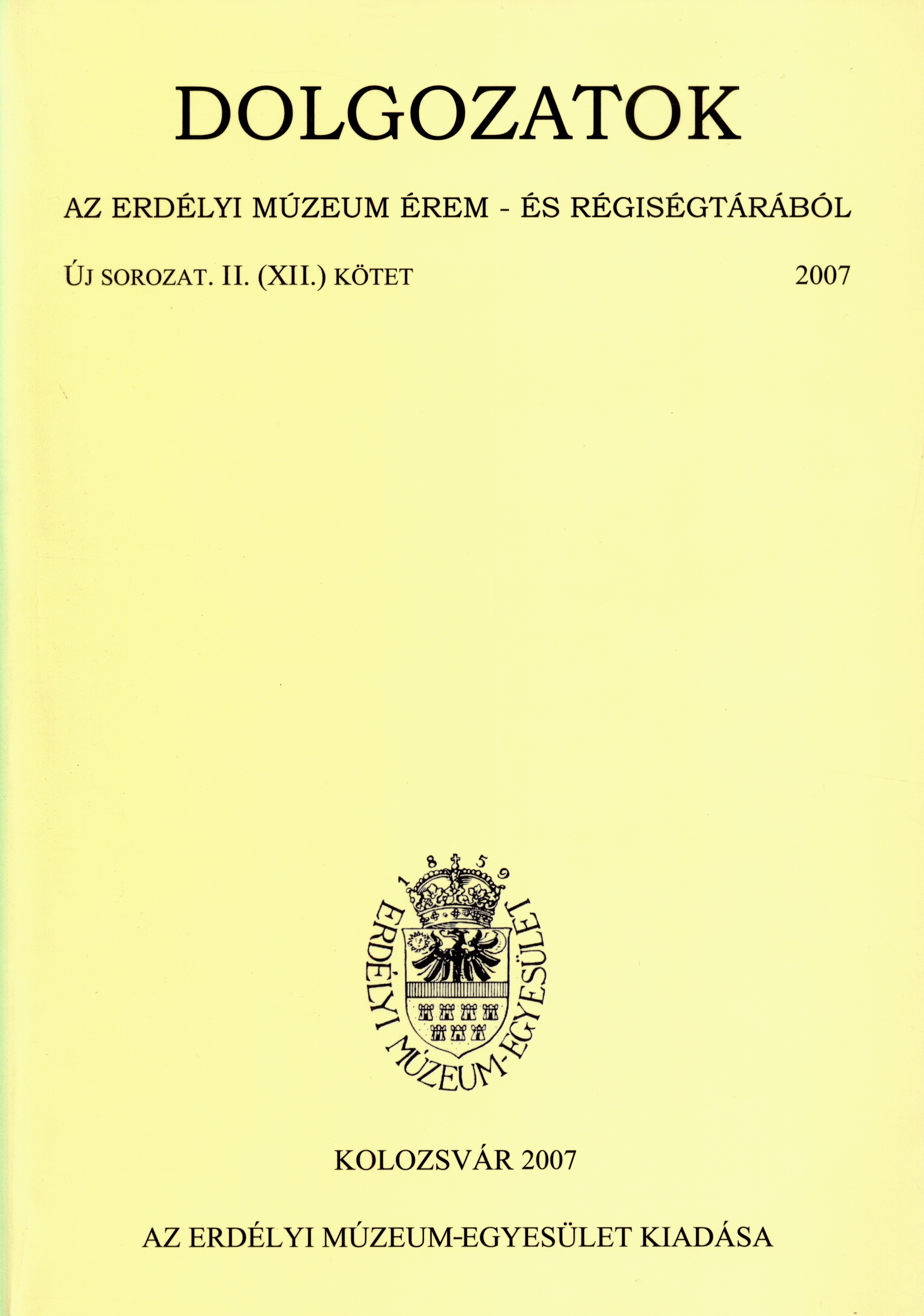Református kollégiumépítkezések Erdélyben a barokk és klasszicizmus korában
The Construction Process of the Calvinist Colleges from Transylvania in the Period of the Baroque and Classicism
The Colleges from Aiud, Târgu-Mureş and Cluj-Napoca
Author(s): János OrbánSubject(s): Cultural history, Architecture, Social history, 18th Century, 19th Century
Published by: Erdélyi Múzeum-Egyesület
Keywords: Transylvania; calvinist colleges; transylvanian Baroque; transylvnian Classicism; Samuel Teleki
Summary/Abstract: The constructions of the Calvinist colleges were mainly a result of the economic development from the second part of the 18th Century. These institutions represent a less studied area of the Transylvanian architecture. Art historians - except Margit B. Nagy, who had discussed certain issues related to the Calvinist College in Cluj-Napoca - failed to focus on the issue of these buildings, concentrating mainly on the monographs of the educational institutions, written at the end of the 19th Century. The present paper represents an attempt to study the structures of the buildings from Aiud, Târgu-Mureş and Cluj-Napoca based on the archival sources related to the historical edifices of the Baroque and Classicist periods. In Aiud (Nagyenyed) the construction process of the Old College (burned and pulled down in 1849 started in the first half of the 18th Century, followed by the construction of the Little College, finished under the patronage of Sámuel Teleki with the contribution of the master builders from Târgu Mureş, the mason Paul Schmidt and the carpenter Mihály Győrfi. The same craftsmen took part in the construction project of Teleki's castle from Dumbrăvioara as well. The new requirements of the college from the 1820's resulted the development of a grandiose construction project. The plan of the four winged, three storey building with two interior courts of the New College was elaborated by the architect Boldizsár Schilling. From this project only the southern wing was finalized between 1826 and 1836, by György Winkler, mason from Cluj-Napoca. In Târgu-Mureş (Marosvásárhely) the construction works of the library and the auditorium during 1777 and 1779 (buildings that no longer exist today) had been conducted by the mason Paul Schmidt with the assistance of many other masters (i.e. the framer Vilmos Müncher, the carpenter Mátyus etc.). Between 1801 and 1804 these works were followed by the edification project of the northern wing, designed by László Ugrai and carried out by the masons Constanz Schmidt and Iohannes Sommer. The roof is the work of Christian Schön, a carpenter from Rupea. During the 1780's the old building of the college in Cluj-Napoca (Kolozsvár) dating from the 17th Century was extended with a new wing. The works were led by the master from Cluj, Joseph Leder. With the aid of the archival sources one can reconstruct the list of the majority of the masters who took part in the construction works. The wing was situated on the western side of the old college, approximately on the place of the present building, which was built after the great fire from 1798, between 1799 and 1802 according to the instructions of master Leder. Beside the carpenters Mihály Fűzi and István Jónás, the ironworker István Ungvári and the stone-sawyer Mihály Schindler also took part in the construction process. The library and auditorium were finished later on, between 1817 and 1819 with the participation of the mason Ferenc Gold and the carpenter István Binetz.
Journal: Dolgozatok az Erdélyi Múzeum Érem- és Régiségtárából. Új sorozat
- Issue Year: 2007
- Issue No: II
- Page Range: 253-287
- Page Count: 35
- Language: Hungarian

